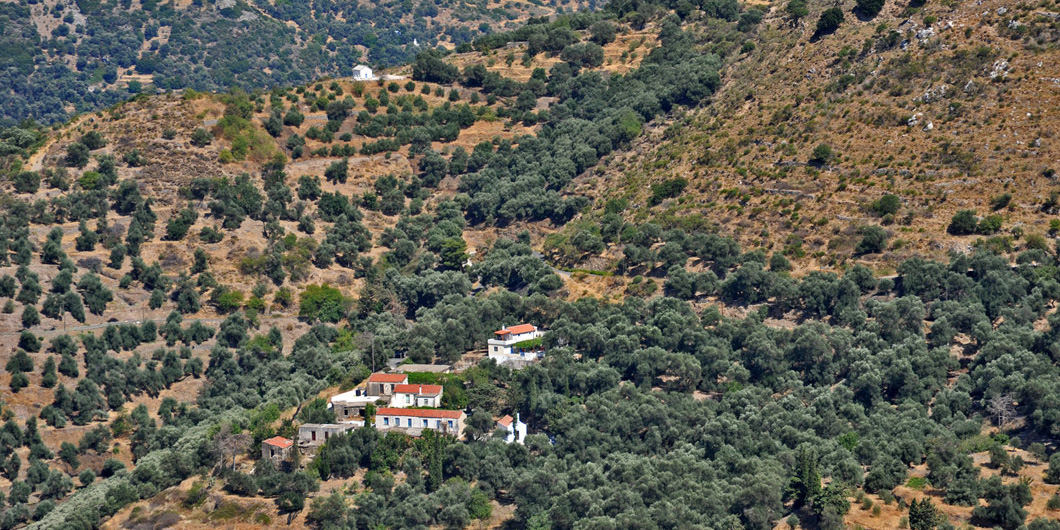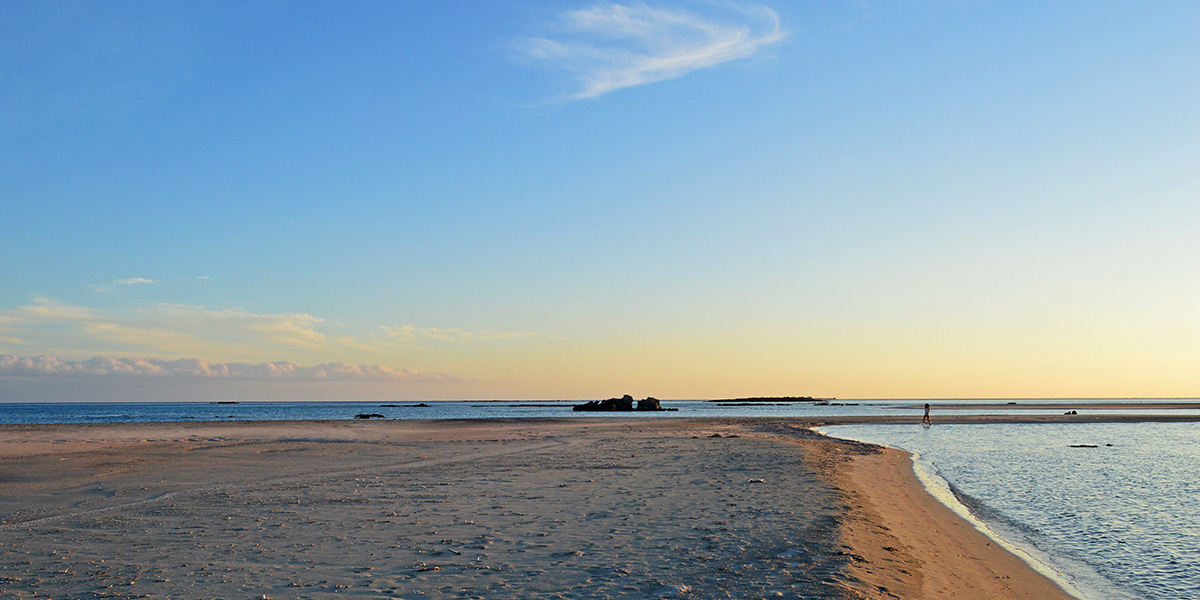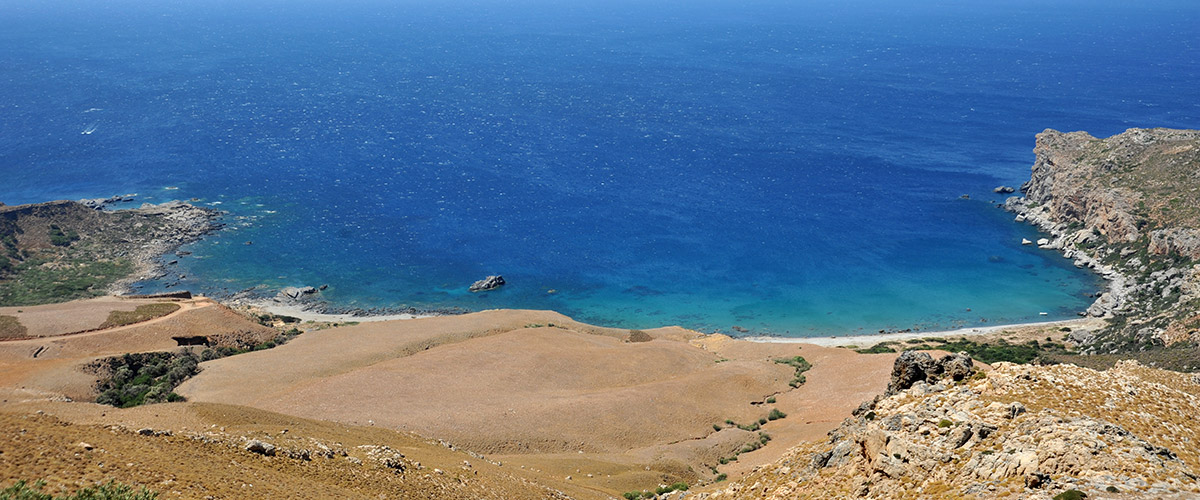A route which connects some of the most beautiful beaches of Western Crete, and which also reveals unique ecosystems and picturesque villages to the visitor.
Kasteli-Elos-Elafonissi

We begin at Kasteli (1), the westernmost town of the island, and follow the road that leads to Topolia (2).
A little to the south of the village and somewhat lower than the road level, the entrance to the gorge of Topolia, which is worth a visit, can be seen. The landscape is quite rugged and the stream bed full of vegetation; however, passing through the gorge is not particularly difficult, and it requires approximately one hour.
We continue southwards and after a few kilometers we enter a large valley where the ”kastanokhoria” (chestnut producing villages) of the Municipality of Inakhori area are situated.
At this point we can make a detour to the right, following the uphill road towards the old, restored village of Milia (3), which gives us a good idea of the earlier morphology of little agricultural settlements of the region. Milia is touristically developed and offers accommodation and catering facilities.
Driving along the road which leads into the valley we reach Elos (4), a village built in a verdant landscape with chestnut trees, plane trees and many fruit orchards.
A stop at one of the tavernas at the village centre, for a coffee or a meal below the plane trees, is well worth making.
Leaving Elos behind, the road continues uphill until a point where it reaches a characteristic small saddle; from there on we drive in a southerly direction. The view over the plain of Chryssoskalitissa opens up ahead of us.
We continue downhill now into the valley, through a landscape full of plane trees, large olive trees and orchards. After a little while we reach Kefali, from where we take the road that leads south, towards the Stamio bay. Then, the bare plain of Chryssoskalitissa (5) stretches out before us.
The Monastery of Chryssoskalitissa , which is dedicated to the Dormition of the Virgin and to the Holy Trinity, is built on a rocky elevation which offers a panoramic view. The church that we see today was built in 1894 and the icon of the Dormition of the Virgin is believed to be of the 10th century.
Tradition has it that a golden step is part of the stairway that ascends to the monastery, which cannot be seen by sinful people.
We continue southwards; passing through the plain, we come to the south-westernmost point of Crete, where Elafonissi, one of the most spectacular locations of the island, is to be found.
Elafonissi (6) is a little low island which is in fact an extension of the land, given that the sea water at the strait which separates them is less than a metre deep. This fact enables the visitor to reach the island on foot. The white sand dunes that cover the biggest part of the island and the beautiful beaches with turquoise waters create an amazing ecosystem.

On the rocky elevated western part of the island a lighthouse can be seen, as well as the communal burial site of the victims of the Austrian ship “Imperatrice” which sank here in 1907. It is also believed that a sanctuary of the god Apollo used to be here. Also, a massive massacre of revolutionaries, including a large number of women and children, who had taken refuge in Elafonίssi, took place here by the Turks, in 1824.
Elafonίssi today, together with the opposite shore, makes up a protected area of outstanding natural beauty.
At the peak of the tourist season the place is packed with sun beds and swimmers; however, one can find a more private spot if one walks away from the central beach.
A little to the east of Elafonissi, one of the few cedar forests of Crete is to be found at the magnificent Kedrodasos beach. There are no facilities in the area, and the beach can be accessed by car only up to a certain point and then on foot, a relatively brief hike.
Elafonissi-Sfinari-Falassarna

On our return to Kastéli, we follow the road westwards as far as the village of Kefali (7). This road passes along a hillside and offers a distant view of the sea, as far as the village of Kampos.
This route passes through the village of Berbathiana, place of origin of the family of the great Greek composer Mίkis Theodorakis.
Near Kampos there is a small gorge, in which a chapel of Saint Catherine (Agia Ekaterini) is to be found. This gorge ends up at the beautiful, secluded Platanakia beach, a two-hour walk approximately.
The route continues northwards and after a few kilometres leads to the coastal settlement of Sfinàri. Along the route we have the chance to swim in the waters of Sfinari beach or a little further on, at the solitary bay of Kokkina Gremna with its deep, clear waters.
The fishing settlement of Sfinari (8) is worth a visit for yet another reason: it is well-known for its fresh fish.
Leaving Sfinari, we continue northwards. From Plàtanos village we can visit Falassarna (9) to enjoy a spectacular sunset at one of the most famous beaches of Crete, with crystal-clear waters and pale sand.
A somehow tiring route. You will drive up and down the hills of the region several times. The landscape, the panoramic views at the west, towards the sea, as well as the final destination (Falassarma beach) will compensate.
























